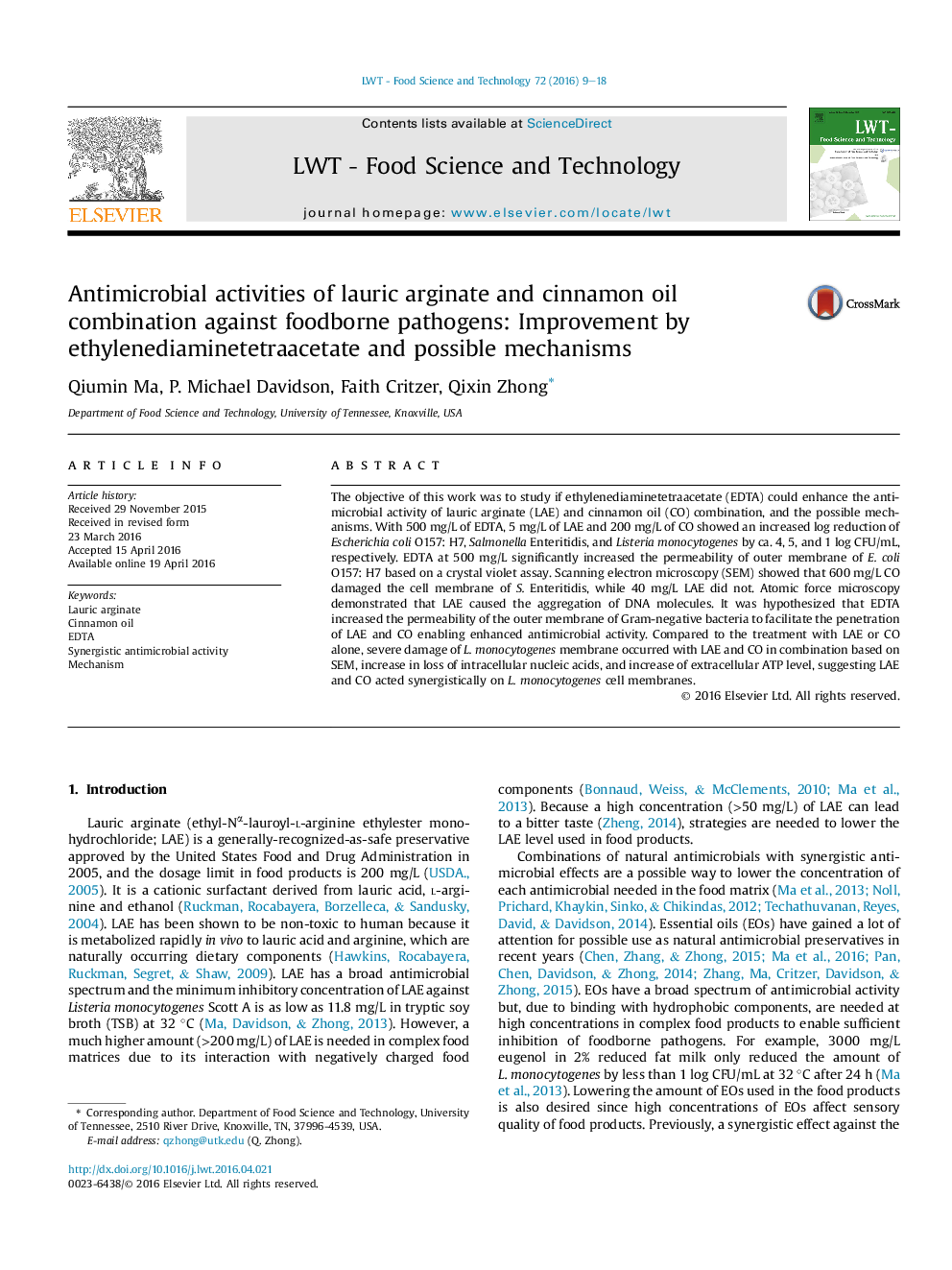| Article ID | Journal | Published Year | Pages | File Type |
|---|---|---|---|---|
| 4563252 | LWT - Food Science and Technology | 2016 | 10 Pages |
•EDTA enhanced activity of lauric arginate (LAE) and cinnamon oil (CO) combination.•EDTA significantly increased the outer membrane permeability of Escherichia coli O157: H7.•CO caused a severe damage of cell membranes of Salmonella Enteritidis.•LAE + CO caused a severe damage of cell membranes of Listeria monocytogenes.•LAE did not lyse bacterial cells but induced the aggregation of bacteria DNA molecules.
The objective of this work was to study if ethylenediaminetetraacetate (EDTA) could enhance the antimicrobial activity of lauric arginate (LAE) and cinnamon oil (CO) combination, and the possible mechanisms. With 500 mg/L of EDTA, 5 mg/L of LAE and 200 mg/L of CO showed an increased log reduction of Escherichia coli O157: H7, Salmonella Enteritidis, and Listeria monocytogenes by ca. 4, 5, and 1 log CFU/mL, respectively. EDTA at 500 mg/L significantly increased the permeability of outer membrane of E. coli O157: H7 based on a crystal violet assay. Scanning electron microscopy (SEM) showed that 600 mg/L CO damaged the cell membrane of S. Enteritidis, while 40 mg/L LAE did not. Atomic force microscopy demonstrated that LAE caused the aggregation of DNA molecules. It was hypothesized that EDTA increased the permeability of the outer membrane of Gram-negative bacteria to facilitate the penetration of LAE and CO enabling enhanced antimicrobial activity. Compared to the treatment with LAE or CO alone, severe damage of L. monocytogenes membrane occurred with LAE and CO in combination based on SEM, increase in loss of intracellular nucleic acids, and increase of extracellular ATP level, suggesting LAE and CO acted synergistically on L. monocytogenes cell membranes.
